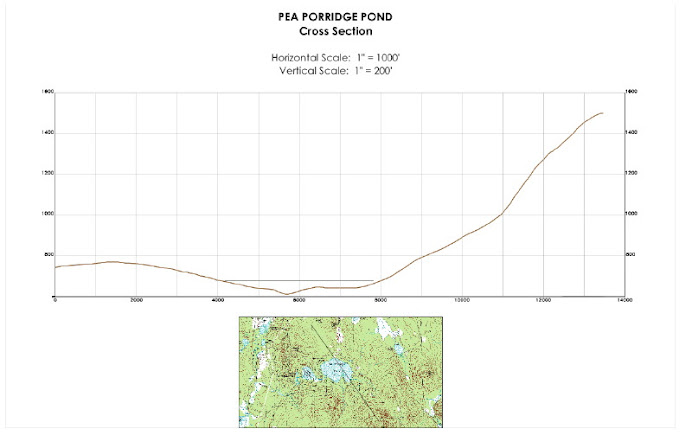Ideal conditions for the GPR transect work on February 23 require that transect endpoints be determined before hand and a 4 foot wide path be cleared along each transect. Then the radar device can be towed along these paths, riding directly on the ice surface to achieve the strongest rebound signal (i.e., best images) from the sediment layers below.
But this impressively snowy winter of ours is presenting an interesting challenge by creating conditions considerably less than ideal. That rainy period a couple of weeks ago allowed a load of water to settle onto the lake's ice surface. The plethora of snow we've had since acts like an insulating blanket over it, preventing that water layer from freezing. Thinking about how to clear the 4 foot paths through all this led us to investigate the nature of the ice cover on the lake.
On Wednesday, Feb 13, we ran a rough transect from the small beach at the Pollock's property ca. WSW toward a green bobhouse located about 125 yards offshore from the Menella & Stetner houses. We identified 4 sites along the transect using a shoreline house as a reference point. They were located as follows:
Pollock site: about 15 yards offshore
Gabrielson site: about 35 yards offshore
Howland site: about 60 yards offshore
Deschene site: about 90 yards offshore
At each site, we dug a shovelwide pit to the solid ice level and measured the depth of snow, of wet but unsaturated slush, of saturated slush (i.e., standing water), and of the ice cover beneath. We were surprised by the extent of these layers and thought others might be interested to see our results.

In no case did we actually get through the ice layer to measure its true thickness, figuring that at 7.5" or more, there should be plenty of thickness to support people, snowmobiles, etc. to meet the project's needs. Saturated Slush turns into a layer of standing water on the ice surface. Unsaturated Slush is the nearly saturated layer of snow above the standing water.
Transect ran from Pollock beach toward the bobhouse just left of center here. Shovel and meterstick (arrow) are at the Howland site.


A shovel-width hole was excavated down to the solid ice layer.


Depths of snow, unsaturated slush, saturated slush (i.e., standing water), and the ice depth penetrated using the crowbar were measured with a meterstick. NB: we stopped short of actually penetrating the ice layer. Therefore, ice depths are minimal – as far as we did penetrate. It was our impression that at least 10" of ice was present everywhere.
Tip of the meterstick is in the hole partially through the ice layer. You can see the saturated slush/standing water on the ice surface. Next higher is the wet but unsaturated slush layer. Naturally, the snow is topmost.
So how do we clear up to 2 ft of snow and 9 in of slush and water to create transect paths? Ideas?



No comments:
Post a Comment